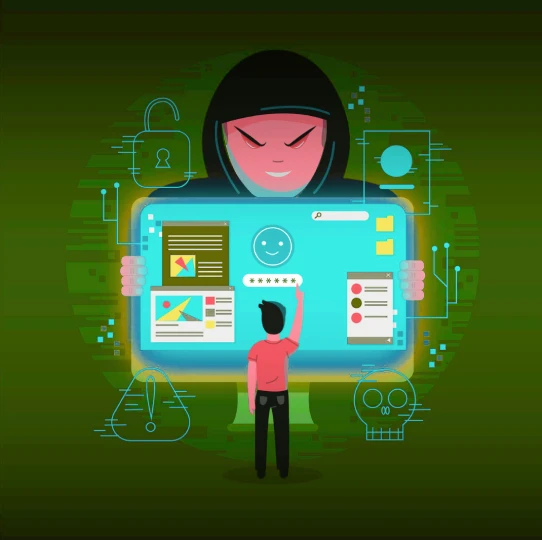Phishing has always been a threat. But with the rise of generative AI, it’s now faster, smarter, and harder to detect than ever. What used to be clumsy, typo-filled emails are now polished messages that mimic real voices, real conversations, and real urgency.
This shift has changed the nature of cyber defense. Ethical hacking is no longer about spotting obvious fakes, it’s about understanding how advanced systems mimic trust and how to defend against attacks that think like humans.
Let’s break down how AI transforms phishing, why it matters, and how you can build the skills to respond.
How AI Is Changing Phishing Scams
Phishing used to rely on volume send enough generic messages and hope someone clicks. That’s no longer the game. AI has shifted phishing from bulk attacks to highly personalized, believable engagements that are harder to detect and easier to fall for.
Today’s attackers are using advanced AI models to build trust faster, mimic authenticity, and tailor messages with pinpoint accuracy. This makes even well-trained users vulnerable not because they’re careless, but because the deception feels real.
Here’s how it’s happening:
Large language models can scan public posts, emails, or leaked documents to mimic the tone, syntax, and vocabulary of specific individuals. A fake email from your “manager” no longer reads like spam, it feels like a real message.
Voice synthesis tools make audio-based phishing (vishing) much more convincing. A phone call from a fake executive or urgent voicemail can now sound nearly indistinguishable from the real person’s voice.
Deepfake videos are emerging as the next-level social engineering weapon. A short clip of a CEO “requesting a wire transfer” or delivering urgent instructions on a video call could bypass even cautious employees.
Social engineering, now powered by AI, becomes data-driven. Attackers scrape social profiles, company bios, or previous emails to build phishing messages that match context, like referencing an actual recent event, a meeting, or a project deadline.
What’s dangerous here is the shift in dynamics. AI doesn’t just automate phishing, it adapts it. The scam isn’t obvious because it doesn’t feel like a scam. It feels like routine communication.
That changes everything for ethical hackers and defenders. The challenge is no longer spotting the obvious, it’s anticipating the subtle. You must think like an attacker, understand how AI is used in pretexting and deception, and test systems and people under new, more realistic conditions.
The Rise of “Smart” Phishing
Traditional phishing relied on careless formatting, vague threats, or suspicious links. But that model is fading. AI has introduced a new class of phishing, adaptive, continuous, and context-aware.
This isn’t just about sending better emails; it’s about simulating real human interaction at scale.
AI has turned phishing into a dynamic, data-driven process. Attacks no longer end at the first email; they evolve in real time, reacting to how a target responds. These are no longer crude scams, they’re simulations of trust.
Here’s how attackers now operate:
Hyper-personalized messaging: Language models pull from public profiles, past data breaches, and scraped online behavior to generate emails that reflect your actual work, interests, or recent activity. These messages reference real colleagues, projects, or tools you use.
Conversational bots mid-thread: Instead of a single attempt, AI-powered bots continue the conversation if you respond, even if you push back. This makes it feel like a genuine interaction, not a static template. Think of it as phishing with follow-through.
A/B tested manipulation: Attackers use automation to test subject lines, send times, and phrasing, just like marketers do. But instead of optimizing for conversion, they optimize for deception. The most effective formats get reused automatically at scale.
Multichannel integration: Smart phishing doesn’t stop at email. Attackers use the same AI tools to send fake Slack messages, Teams invites, SMS alerts, or social DMs. When a scam spans platforms, it feels more legitimate.
This new breed of phishing is agile, scalable, and hard to detect using legacy defenses. It doesn’t just spoof information, it mimics behavior. And that’s what makes it dangerous.
For ethical hackers, this raises the stakes. Testing security means replicating this complexity, using the same tools to simulate realistic scenarios. It also means building training and tools that prepare people for intelligent deception, not just obvious threats.
Ethical hacking now has to match AI’s pace, adapting just as quickly, thinking just as strategically, and understanding not only what AI can do, but how it’s being used to blur the line between safety and compromise.
Why This Matters for Cybersecurity
AI-powered phishing is harder to spot, harder to block, and harder to train against. Traditional filters may miss well-crafted AI content. Awareness training may not prepare users for deepfake voice calls or multi-platform deception.
- Your systems need more than spam filters, they need behavioral anomaly detection
- Human vigilance isn’t enough without technical safeguards
- Threat intelligence must now include synthetic media and machine-generated patterns
It’s no longer about just patching software. It’s about rethinking how humans and machines interact under stress.
Ethical Hacking’s Role in Defending Against AI Threats
Ethical hacking is how defenses get smarter. White-hat hackers simulate attacks not to break systems, but to expose weak spots before real attackers do. With AI in play, this role has never been more critical.
- Simulate phishing campaigns using AI tools to test employee resilience
- Audit internal communication tools for exposure points or spoofable IDs
- Analyze how synthetic content bypasses detection and develop countermeasures
- Train security teams to recognize machine-crafted patterns of attack
The goal is no longer just prevention, it’s adaptation. Ethical hacking helps organizations test their reflexes before real-world damage occurs.
Skills That Matter in the Age of AI-Driven Attacks
To stay ahead, you need more than technical knowledge. You need strategic thinking, creativity, and the ability to see patterns where others see routine.
Build skills like:
- Red teaming and phishing simulation design
- AI prompt engineering for defense and offense
- Deepfake and synthetic media detection
- Cyber forensic analysis of AI-generated threats
- Behavioral threat modeling and anomaly tracking
Being prepared doesn’t mean knowing everything. It means thinking like an attacker, then building systems that hold up even when the playbook changes.
What’s Next: A Landscape That Keeps Learning
AI phishing isn’t going away. It’s just getting started. Future attacks could combine multiple AI tools: voice, video, text, and even autonomous bots.
This raises critical challenges:
- Can you tell if a message was written by a human or a model?
- Can your systems adapt fast enough when phishing looks like everyday interaction?
- Are your team and tech built to learn in real time, not just react?
The future of security is layered, adaptive, and AI-aware. And it starts with the people who think critically, test aggressively, and build responsibly.
How Appin Helps You Prepare for the New Era of Cyber Threats
Appin is where future defenders build real-world capabilities. If you’re serious about ethical hacking, AI security, and next-gen threat analysis, this is where you sharpen your edge.
- Hands-on labs that simulate AI-powered attacks and defenses
- Training in phishing simulation tools, anomaly detection, and forensic response
- Real-world projects that push you to think critically and act strategically
- Mentorship from experts who’ve worked on both sides of the cybersecurity spectrum
You don’t just learn theory. At Appin, you practice the tactics that modern attackers use, and the defenses that stop them.





